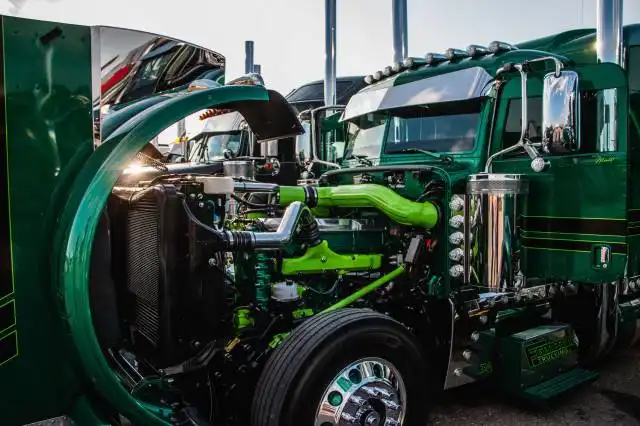Start a Pedicab Business
Pedaling Towards a Greener Future with Your Eco-Friendly Pedicab Venture
| Updated


PEDICAB BUSINESS
Taking a ride on entrepreneurship street? Then consider steering your business venture towards a Pedicab Business. As it's essentially a bicycle taxi, this low-overhead startup not only pedals you into the transportation industry but does so in an environmentally-friendly fashion. With people becoming more eco-conscious each day, your Pedicab business could be the fresh ride that city dwellers and tourists have been waiting for. So, saddle up, don your helmet, and get ready to spin the wheels of your new charming, green, and active business venture!
Jump to Business Plan
RELATED BUSINESS IDEAS
Browse ALL Cars & Transportation Solutions Business Ideas
Discover Your Perfect Domain
Unlock the door to your online success with our hand-picked selection of premium domain names. Whether you're starting a new venture or rebranding an existing one, the right domain can set the tone for your digital presence. Browse through our curated list, each with its unique potential to enhance your brand's visibility and credibility.
PEDICAB MINI BUSINESS PLAN
This a quick reality check to help you identify the strengths and weaknesses of your business concept before you dive in.
Expected Percent Margin:
- Gross Margin: 65-75%
- Net Profit Margin: 20-30%
Earnings Expectations:
- Daily Earnings: $100 - $200
- Weekly Earnings: $700 - $1,400
- Monthly Earnings: $3,000 - $6,000
- Annual Earnings: $36,000 - $72,000
Actions to Hit Those Numbers:
Fleet Management:
- Initial Investment: Around $3,000 - $6,000 per pedicab, you'll need at least 3-5 for a decent range of operations.
- Maintenance: Routine checks and maintenance for each pedicab.
Marketing and Customer Acquisition:
- Social Media: Harness the power of Instagram, Twitter, and Facebook. Share real-time data, customer stories, and promotional ads.
- Local Advertising: Partner with local businesses or tourist spots for promotions.
Driver's Training and Experience:
- Staffing: Employ enthusiastic, sociable and committed drivers knowledgeable about local areas.
- Training: Invest in comprehensive driver's training and licensing.
Cost Control:
- Fuel: This is a manual ride - no fuel charges!
- Insurance: Budget around $1000-$2000 per year per pedicab.
Business Operations:
- Operation Hours: Keep availability high during peak tourist hours and seasons.
- Transaction Volume: Target 10-20 transactions at an average fare of $10-$20.
These are generalized estimations and can vary depending upon your location, economic trends, and business strategy. Always consult a financial advisor for detailed insights and guidance tailored to your business.
NOT WHAT YOU HAD IN MIND? Here are more ideas



Browse ALL Cars & Transportation Solutions Business Ideas
Grab Your Business Website Name
Before you get caught up in the whirlwind of setting up your business, invest in a domain name. It's a small but significant step that lays the foundation for your brand and makes it easier for customers to find and trust you. Just like you wouldn't build a house without securing the land first, don't build a business without securing your domain name.
"Why? Can't that wait?" Here's why it shouldn't
Step 1: Determine if a Pedicab Business is Right for You
Breakdown of Startup Expenses
When considering starting a pedicab business, it is important to understand the startup expenses. These expenses include the cost of the pedicab itself, the cost of any necessary permits and licenses, the cost of insurance, and the cost of any necessary safety equipment. Additionally, you may need to factor in the cost of any necessary repairs or maintenance. It is important to research the cost of each of these items before committing to starting a pedicab business.
Breakdown of Ongoing Expenses
In addition to the startup expenses, it is important to understand the ongoing expenses associated with running a pedicab business. These expenses include fuel costs, the cost of any necessary repairs and maintenance, the cost of any necessary permits and licenses, and the cost of any necessary safety equipment. Additionally, you may need to factor in the cost of insurance and any other costs associated with running the business. It is important to research the cost of each of these items before committing to starting a pedicab business.
Examples of Ways to Make Money
There are a variety of ways to make money with a pedicab business. The most common way to make money is by charging customers a fee for rides. Additionally, you may be able to make money by offering tours or special events. You may also be able to make money by offering advertising space on your pedicab. Additionally, you may be able to make money by offering merchandise or services related to your pedicab business. It is important to research the different ways to make money with a pedicab business before committing to starting one.
Step 2: Naming the Business
Naming a business is an important step in the process of starting a pedicab business. It should be something that is memorable and unique, but also reflects the mission of the business. It should also be something that is easy to say and spell. When coming up with a name, it is important to consider the target audience and the type of services that will be offered. Additionally, it is important to make sure that the name is not already taken by another business. It is also a good idea to check with the local government to make sure that the name is not already registered as a trademark.
Once a name has been chosen, it is important to register it with the local government. This will help protect the business from any legal issues that may arise in the future. Additionally, registering the name will make it easier to open a bank account and obtain a business license. It is also important to consider the domain name associated with the business. If the name is available, it is a good idea to purchase the domain name to ensure that the business has a professional online presence.
Step 3: Obtain Necessary Licenses and Permits
Local Licenses and Permits
Before starting a pedicab business, it is important to obtain the necessary licenses and permits from local authorities. Depending on the location, this may include a business license, a peddler’s license, a tax registration certificate, and a license to operate in certain areas. Additionally, some cities may require special permits to operate a pedicab business. It is important to research the local regulations and requirements to ensure that all necessary licenses and permits are obtained.
State Licenses and Permits
In addition to local licenses and permits, a pedicab business may require state licenses and permits. This may include a seller’s permit, a motor vehicle license, and a driver’s license. Additionally, some states may require special permits to operate a pedicab business. It is important to research the state regulations and requirements to ensure that all necessary licenses and permits are obtained. Furthermore, it is important to check with the Department of Transportation to ensure that the pedicab business is compliant with all safety regulations.
Step 4: Acquire Pedicabs
New or Used Pedicabs: When it comes to acquiring pedicabs, there are two options: new or used. Purchasing new pedicabs can be expensive, but they come with the benefit of being brand new and having the latest features. Used pedicabs can be a more cost-effective option, but they may require more maintenance and repairs. It is important to weigh the pros and cons of each option before making a decision.
Customizing Pedicabs
After deciding between new and used pedicabs, it is important to customize the pedicabs to fit the needs of the business. This could include adding a logo, customizing the paint job, or adding additional features such as a sound system or a bike rack. It is important to customize the pedicabs to make them stand out and attract customers. Additionally, it is important to make sure the pedicabs are up to safety standards and that they are comfortable for passengers.
Step 5: Create a Business Plan
Creating a business plan is an important part of starting a pedicab business. The plan should include a description of the business, a market analysis, a description of the services offered, a financial plan, and a marketing plan. The plan should also include a description of the pedicab business’s goals and objectives, as well as a timeline for achieving them.
Outline of Business Plan Components
The business plan should include a description of the business, including the type of pedicab business, the services offered, and the target market. It should also include a market analysis, which should include an analysis of the competition, the target market, and the potential for growth. The financial plan should include a breakdown of startup expenses, ongoing expenses, and potential sources of revenue. The marketing plan should include a description of the marketing strategies that will be used to promote the business. Finally, the plan should include a timeline for achieving the business’s goals and objectives.
Step 6: Find a Location
When selecting a location for a pedicab business, there are several factors to consider. First, the location should be in an area that is heavily trafficked by pedestrians and cyclists. This will ensure that there is a steady flow of potential customers. Second, the location should be close to attractions and other businesses that will draw in customers. Third, the location should be in an area that is safe and secure for both the pedicab operator and the customers. Finally, the location should be in an area that is zoned for commercial use.
Obtaining the Necessary Permits
Once a suitable location is found, the next step is to obtain the necessary permits. Depending on the city or state, this may include a business license, a pedicab permit, and a zoning permit. It is important to research the local regulations and obtain all the necessary permits before beginning operations. Additionally, the pedicab operator should check with the local police department to ensure that the pedicab business is in compliance with all applicable laws.
Securing Insurance
In addition to obtaining the necessary permits, it is important to secure insurance for the pedicab business. This will protect the pedicab operator in the event of an accident or other unforeseen incident. The insurance should cover both the pedicab operator and the customers. Additionally, the insurance should cover any property damage that may occur during the course of business.
Setting Up the Pedicab
Once the permits and insurance are obtained, the pedicab operator can begin setting up the pedicab. This includes assembling the pedicab, installing the necessary safety equipment, and making sure that the pedicab is in good working order. Additionally, the pedicab operator should make sure that the pedicab is properly registered and that all necessary paperwork is filed with the local authorities.
Advertising the Business
Once the pedicab is set up, the next step is to advertise the business. This can be done through a variety of methods, including flyers, posters, and online advertising. Additionally, the pedicab operator should consider partnering with local businesses and attractions to promote the business. This will help to draw in more customers and increase the visibility of the pedicab business.
Step 7: Promote the Business
Advertising Strategies
Promoting a pedicab business is key to its success. Traditional advertising strategies, such as radio and television commercials, newspaper ads, and flyers, can be effective in reaching a large audience. Additionally, advertising on the side of the pedicabs themselves can be a great way to get the word out about the business. Additionally, offering discounts and promotions can be a great way to attract new customers.
Social Media Strategies
Social media can be a powerful tool for promoting a pedicab business. Creating a website and social media accounts for the business can help to reach potential customers. Additionally, creating content such as blog posts, videos, and photos can help to engage potential customers and create a following. Additionally, using targeted ads on social media can be a great way to reach a specific audience. Finally, creating partnerships with other businesses and influencers can help to increase exposure and reach more potential customers.
Step 8: Hire Employees
When starting a pedicab business, it is important to hire employees that are qualified and trained to do the job. When looking for employees, you should consider their qualifications and experience. It is important to ensure that they have the necessary skills and knowledge to operate the pedicab safely and efficiently.
Qualifications for Employees
When hiring employees, you should look for individuals who have experience in the transportation industry, as well as those who have a valid driver’s license. Additionally, you should look for individuals who have a good understanding of the local area and the laws and regulations that apply to the business.
Training Employees
Once you have identified qualified employees, you should provide them with the necessary training. This should include instruction on how to operate the pedicab safely and efficiently, as well as how to interact with customers. Additionally, you should provide training on the laws and regulations that apply to the business, as well as how to handle customer complaints and disputes. Finally, you should provide instruction on how to properly maintain the pedicab and keep it in good working condition.
Step 9: Track and Manage Finances
Accounting Software
It is important to have an accounting software to track and manage finances for your pedicab business. This software should be able to track income, expenses, and profits. Additionally, it should be able to generate reports and provide you with an accurate view of your financials. This will help you make informed decisions and keep your business running smoothly.
Budgeting Strategies
It is also important to have a budgeting strategy in place for your pedicab business. This should include setting aside money for taxes, insurance, and other expenses. Additionally, you should create a budget for marketing and advertising expenses. This will help you stay on track and ensure that you are not overspending. Finally, you should create a budget for any unexpected expenses that may arise. This will help you stay prepared and ensure that your business is running efficiently.
EXPLORE MORE CATEGORIES
Browse ALL Business Idea Categories
TAKE THE NEXT STEPS









